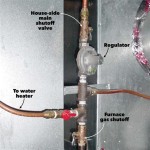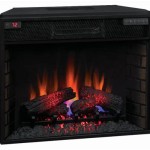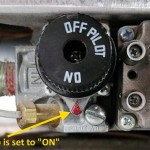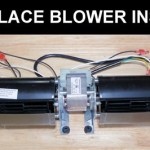```html
EPA Certified Fireplaces: A Guide to Efficient and Clean Heating
Fireplaces have long been a cherished feature in homes, offering warmth, ambiance, and a focal point for gathering. However, traditional fireplaces are often inefficient and contribute significantly to air pollution. To address these concerns, the Environmental Protection Agency (EPA) has established certification standards for fireplaces that promote cleaner burning and improved energy efficiency. This article delves into the details of EPA certified fireplaces, exploring their benefits, requirements, types, and considerations for selecting the right model.
Understanding EPA Certification
The EPA's fireplace certification program is designed to reduce emissions of particulate matter, carbon monoxide, and other pollutants released during combustion. These emissions can have detrimental effects on both indoor and outdoor air quality, contributing to respiratory problems and exacerbating existing health conditions. The certification process involves rigorous testing to ensure that fireplaces meet specific emission limits. Fireplaces that pass these tests are labeled as EPA certified, signifying their compliance with the agency's standards.
The current EPA standard, often referred to as Phase II, limits particulate matter emissions to 4.5 grams per hour for cord wood stoves and 2.0 grams per hour for pellet stoves. These stringent limits encourage manufacturers to develop and implement cleaner burning technologies. Compliance is verified through laboratory testing using standardized procedures. Fireplaces are tested under various operating conditions to simulate real-world use. The results are then reviewed by the EPA to determine whether the fireplace meets the certification requirements.
EPA certification is not a one-time event. Manufacturers are responsible for maintaining the quality and performance of their certified fireplaces over time. The EPA conducts periodic audits and may require manufacturers to retest their products to ensure continued compliance. This ongoing oversight helps to ensure that EPA certified fireplaces consistently deliver on their promise of cleaner burning and improved energy efficiency.
Benefits of Choosing an EPA Certified Fireplace
Selecting an EPA certified fireplace offers numerous advantages, extending beyond environmental considerations to include economic benefits and improved home comfort. The primary benefit is a significant reduction in emissions, minimizing the impact on air quality and public health. EPA certified fireplaces burn wood more completely, reducing the amount of smoke and particulate matter released into the atmosphere. This is particularly important in areas with high levels of air pollution or where wood burning is a common practice.
Improved energy efficiency is another key benefit. EPA certified fireplaces are designed to extract more heat from each piece of wood, resulting in lower fuel consumption and reduced heating costs. This is achieved through features such as improved combustion chambers, air injection systems, and catalytic converters. These technologies promote more complete combustion, maximizing the heat output while minimizing the amount of unburned fuel that escapes as smoke.
Many states and local jurisdictions offer incentives, such as tax credits or rebates, for installing EPA certified fireplaces. These incentives are designed to encourage the adoption of cleaner heating technologies and reduce air pollution. The availability and specific details of these incentives vary depending on location, so it is advisable to check with local authorities or energy providers to learn about the options available in a particular area.
Beyond the tangible benefits, there is also the peace of mind that comes with knowing that an EPA certified fireplace is a responsible choice. By selecting a certified model, homeowners can contribute to a cleaner environment and a healthier community. This can be particularly appealing to those who are concerned about the environmental impact of their heating choices.
Types of EPA Certified Fireplaces
EPA certification applies to a variety of fireplace types, including wood stoves, pellet stoves, and fireplace inserts. Each type offers unique features and benefits, catering to different heating needs and aesthetic preferences. Understanding the characteristics of each type is crucial for making an informed decision.
Wood stoves are stand-alone heating appliances that burn cord wood. EPA certified wood stoves are designed to burn wood more efficiently and cleanly than traditional wood stoves. They often feature advanced combustion systems that promote more complete burning and reduce emissions. Wood stoves are available in a range of sizes and styles, from rustic to contemporary, allowing homeowners to choose a model that complements their home décor.
Pellet stoves burn compressed wood pellets made from recycled wood waste. Pellet stoves offer several advantages over wood stoves, including automatic fuel feeding, more consistent heat output, and lower emissions. EPA certified pellet stoves are among the cleanest burning solid fuel appliances available. They typically feature a hopper that holds the wood pellets, an auger that feeds the pellets into the combustion chamber, and a thermostat that controls the heat output. Pellet stoves are a convenient and efficient heating option for those who want the ambiance of a fireplace without the hassle of handling cord wood.
Fireplace inserts are designed to be installed inside existing masonry fireplaces. They offer a way to upgrade the efficiency and reduce the emissions of an existing fireplace. EPA certified fireplace inserts are available for both wood and pellet fuel. They typically feature a sealed firebox, a blower fan to circulate heat, and a flue liner to vent exhaust gases safely. Fireplace inserts can transform an inefficient open fireplace into a powerful and clean heating appliance.
Factors to Consider When Choosing an EPA Certified Fireplace
Selecting the right EPA certified fireplace requires careful consideration of several factors, including the size and layout of the home, heating needs, fuel availability, and budget. Determining the appropriate size fireplace is essential for achieving optimal heating performance. A fireplace that is too small will not adequately heat the space, while a fireplace that is too large can overheat the room and waste fuel. It is recommended to consult with a qualified heating professional to determine the appropriate BTU output for a particular home.
Fuel availability is another important consideration. Wood stoves require a readily available supply of cord wood, which may need to be purchased, cut, and stacked. Pellet stoves require a supply of wood pellets, which are typically sold in bags. The cost and availability of these fuels can vary depending on location. It is advisable to compare the cost of different fuels and consider the convenience of obtaining them.
Budget is always a factor in any purchasing decision. The cost of EPA certified fireplaces can range from a few hundred dollars to several thousand dollars, depending on the type, size, and features. Installation costs can also vary, depending on the complexity of the installation and the need for any modifications to the home. It is important to get quotes from multiple installers and factor in all costs before making a decision.
Local regulations and requirements should also be considered. Some areas may have restrictions on wood burning or require permits for installing fireplaces. It is advisable to check with local authorities to ensure compliance with all applicable regulations. Failure to comply with these regulations can result in fines or other penalties.
Finally, consider the long-term maintenance requirements of the fireplace. Wood stoves and pellet stoves require regular cleaning and maintenance to ensure optimal performance and safety. This may include cleaning the flue, removing ash, and inspecting the appliance for any signs of damage. It is important to follow the manufacturer's instructions for maintenance and to schedule regular professional inspections.
```
Epa Certified Wood Burning Fireplaces Canadian Chimney

Superior White Stacked Epa Certified Wood Fireplace Wct6940 North Country Fire

Superior Wct6920 Epa Certified Fireplace Traditional White Stacked Fireplaces Usa

Montecito Estate Epa Certified Wood Burning Fireplace F2845 Embers Home

Wood Burning Epa Certified Fireplace With Powerful Catalytic Heating By Superior Wrt4826

Epa Standards Explained Testing Through The Ages Regency

Superior White Stacked Cf Trad Epa Cert Wood Fireplace Wrt3920 North Country Fire

Superior Wct6920 Epa Certified Fireplace Traditional White Stacked Fireplaces Usa

What Does Epa Certified Mean Westhampton Beach Ny Stove Fireplace

Epa Certified Wood Fireplaces Quadra Fire Catalogs Documentation Brochures
Related Posts








